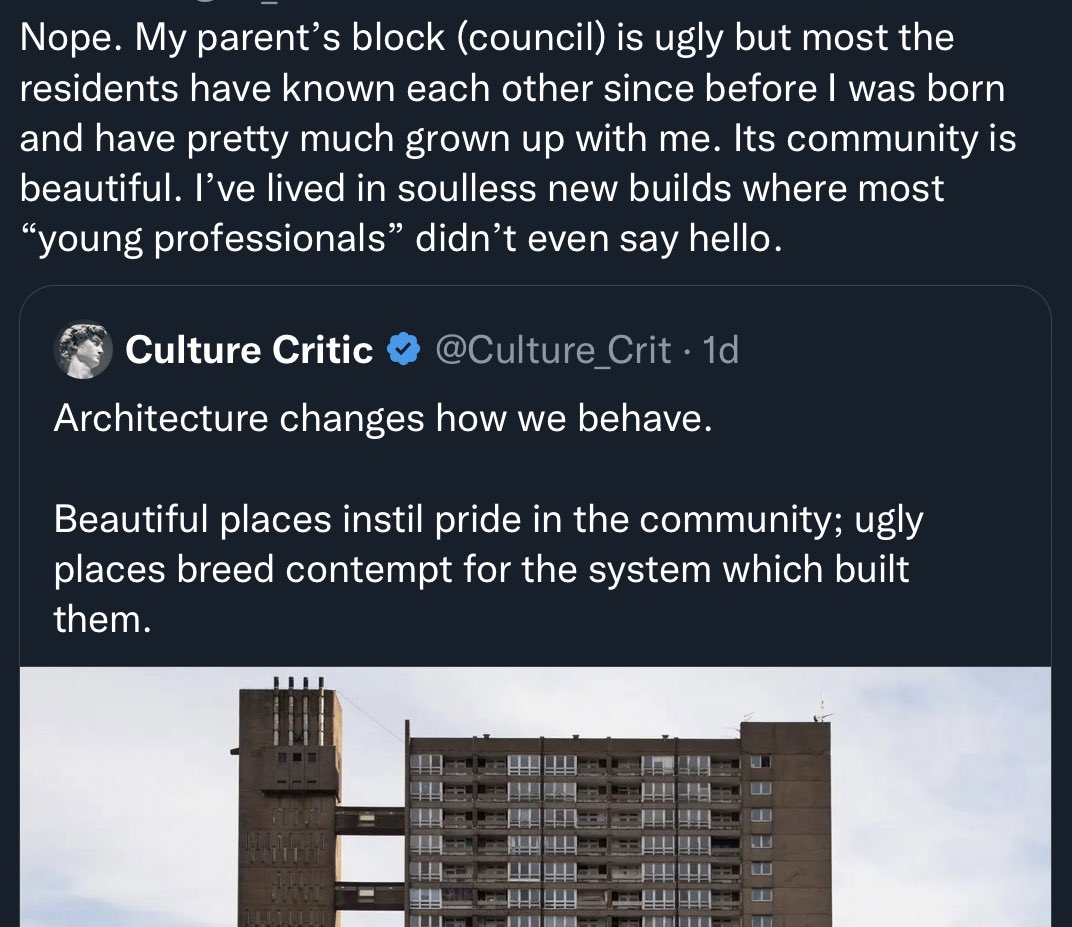Thread by Ashley Rouen Brown
- Tweet
- Feb 16, 2023
- #Architecture #SocialInteraction
Thread
I don’t agree. Cos these estates in London are real communities… neighbours seeing neighbours kids grow up, and being there for every milestone in your life, everyone knowing everyone.
The development I live in? I see my friends all over London more than I see my neighbours 😂
The development I live in? I see my friends all over London more than I see my neighbours 😂
These newer luxury apartments in London are very anti-social… I mean, they might not look grey or “ugly” like the brutalist post-war estates that those trad accounts like to dunk on, but they’re extremely “isolating” places.
Most, it not ALL, of the “ugly” council estates in London were initially designed with ‘community’ at the helm and… notwithstanding crime (which you can attribute to poverty/deprivation)… I’d say the same rings true to this day, in most council estates, people know each other…
Just like the old villages in the countryside, those council estates also had/have basic amenities within walking distance, often on the same estate… doctors, corner shop, dentist, park, pharmacy, etc…
Generations of families living on the same block, and generations of families knowing each other… for generations loool kids growing up and having kids of their own, who end up being friends with each other because the families are like family, etc.
So that’s why I feel that reducing brutalist post-war council estates as merely “ugly places to live” is a pretty simplistic understanding of how *that* style of architecture came about, and what its function in post-war London (and post-war Britain in general) was.
Not all that glitters is gold!
Modern architects and developers should actually show council estates some respect… they had purpose and real function… unlike the vast majority of these modern developments that just “look” nice.
All developments should be nice AND functional.
Modern architects and developers should actually show council estates some respect… they had purpose and real function… unlike the vast majority of these modern developments that just “look” nice.
All developments should be nice AND functional.
